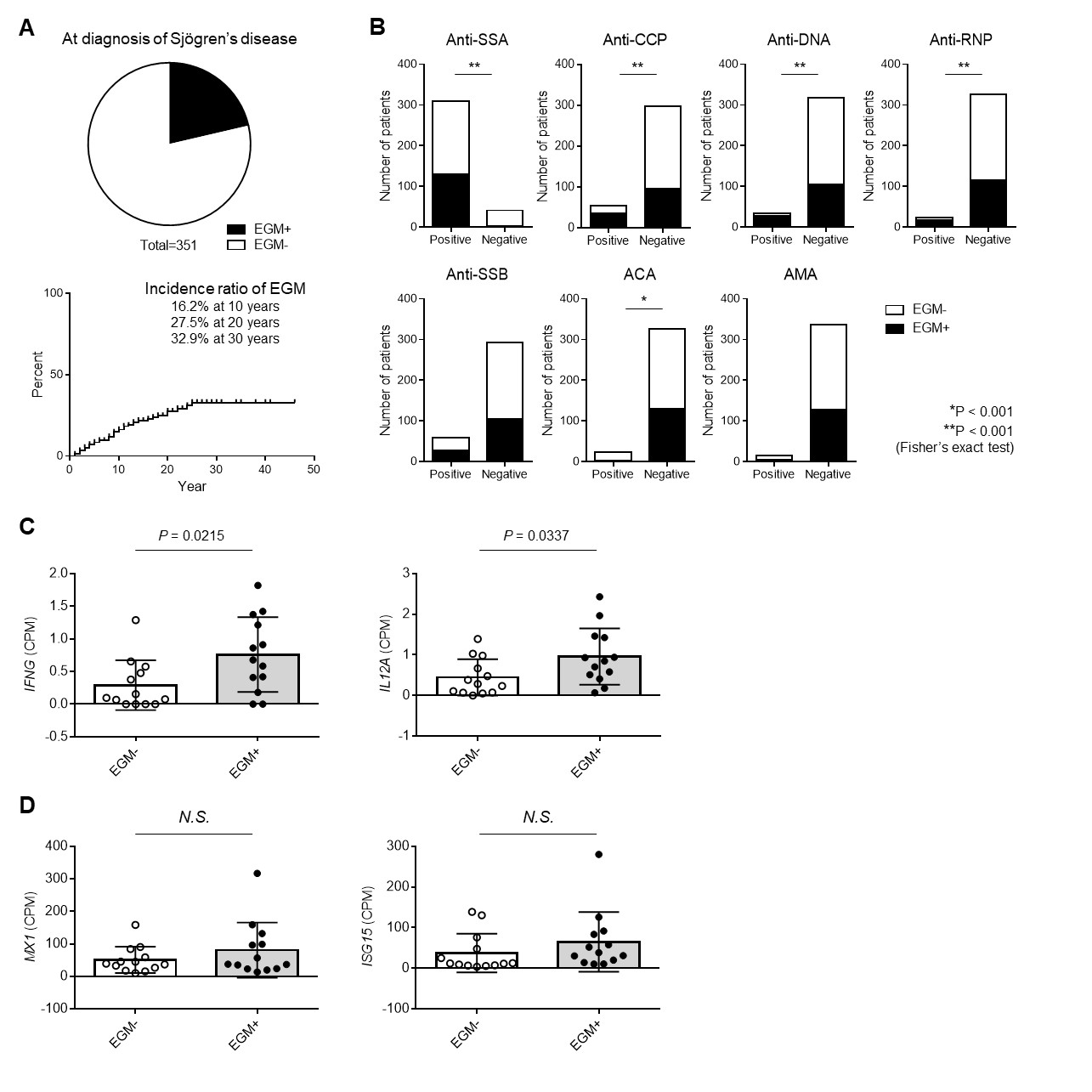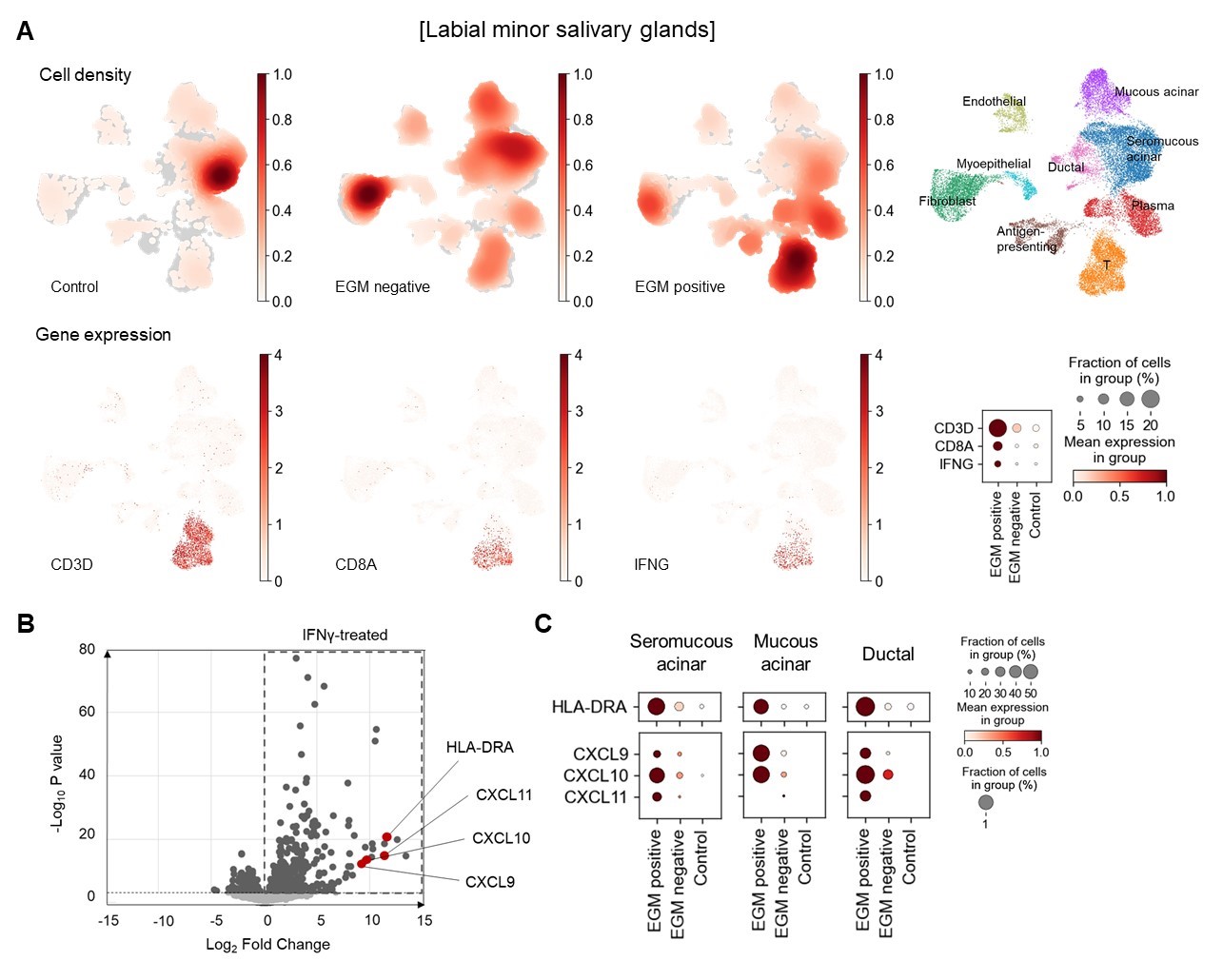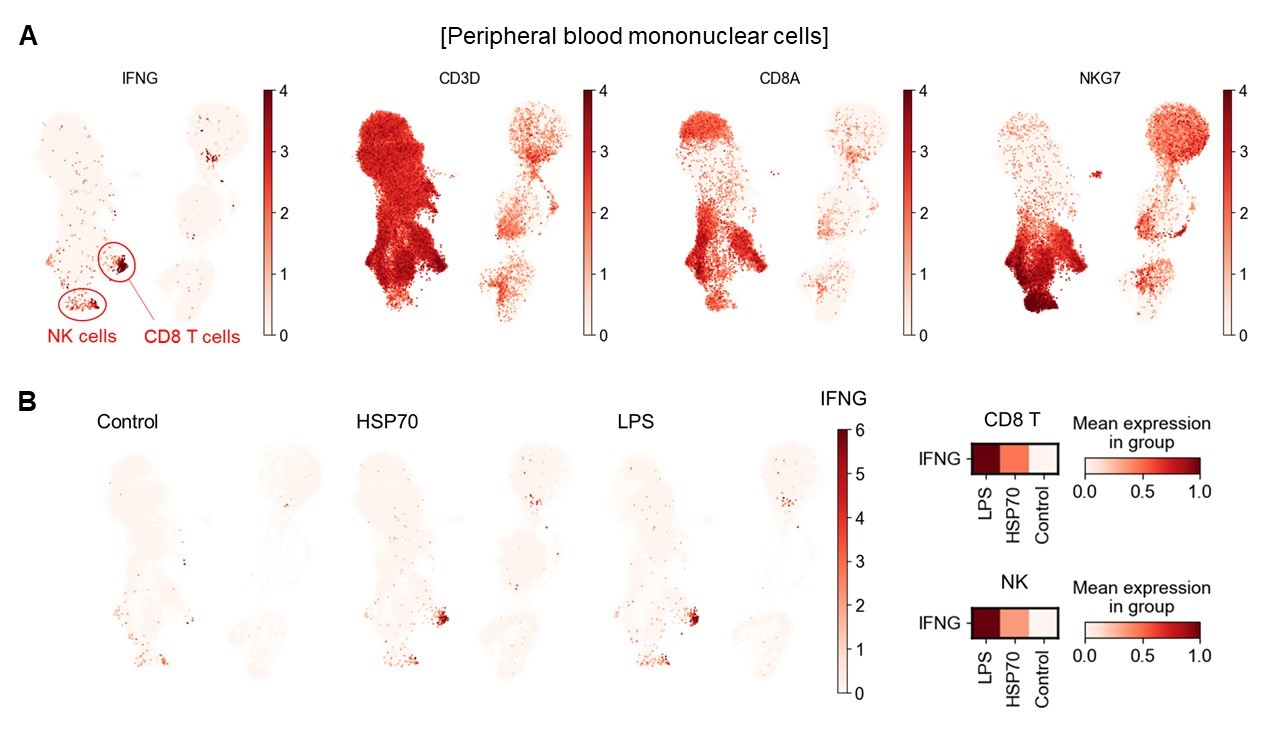Session Information
Session Type: Poster Session C
Session Time: 10:30AM-12:30PM
Background/Purpose: Sjögren’s disease (SjD) is an autoimmune disease that primarily affects salivary and lacrimal glands. Some patients with SjD develop various extraglandular manifestations (EGM), such as articular, cutaneous and neurological manifestations, while others have limited lesions in their exocrine glands through the clinical course. Furthermore, some of the patients is complicated by other systemic autoimmune diseases like rheumatoid arthritis and lupus. Enhanced interferon (IFN) response has been a well-established feature in etiology of SjD, but the detailed molecular mechanisms leading to the development of EGM in just a part of the patients remains unclear. The purpose of this study is to clarify a pathophysiology associated with the development of EGM in SjD.
Methods: A single-center cohort of patients with SjD was retrospectively analyzed for their clinical symptoms, autoantibody profiles, and development of EGM. Gene expressions were compared between SjD patients with EGM and those without EGM using bulk or single-cell RNA sequencing (RNAseq) of labial minor salivary glands (MSGs). Ex vivo culture assays on salivary gland epithelial cells (SGECs) and peripheral blood mononuclear cells (PBMCs) were performed to model responses in target tissues.
Results: Of 351 patients, 75 (21%) had EGM at diagnosis of SjD. During the observation period (median: 15 years), 16.2% and 27.5% of the patients newly developed EGM for up to 10 and 20 years after diagnosis, respectively (Figure 1A). Patients who had serum anti-SSA, anti-CCP, anti-DNA, and/or anti-RNP antibodies developed EGM more frequently. On the other hand, patients with anti-centromere antibody developed EGM less frequently (Figure 1B). Analysis on bulk RNAseq of MSGs showed that expression levels of type II IFN-related genes, IFNG and IL12A, were significantly higher in patients with EGM compared to those without EGM (Figure 1C). In contrast, expression levels of type I IFN-stimulated genes, MX1 and ISG15, were equivalent between both the group (Figure 1D). Single-cell RNAseq analysis revealed that IFNG-expressing CD8 T cells were increased in MSGs of EGM-positive SjD patients (Figure 2A). Treatment with IFN-γ resulted in upregulation of HLA-DRA and CXCL9-11 in ex vivo SGEC culture (Figure 2B). Consistent with the finding, increased expressions of HLA-DRA and CXCL9-11 were found in SGECs of EGM-positive SjD patients (Figure 2C). In PBMCs, CD8 T and NK cells expressed IFNG (Figure 3A). Treatment with lipopolysaccharide or heat shock protein 70, known as toll-like receptor 4 (TLR4) agonists, increased IFNG expression in both CD8 T and NK cells (Figure 3B).
Conclusion: Serum autoantibody profiles and activated IFN-γ signaling pathways in MSGs were associated with the development of EGM in SjD. IFN-γ signaling promoted HLA class II and chemokine expressions in SGECs, which could contribute to dysregulated adaptive immune response with autoantibody formation. Ex vivo cell culture suggested that TLR4 stimulation could induce IFN-γ expression in CD8 T and NK cells, presumably through interaction with monocytic cells. This pathophysiological model provides a possible target to prevent or treat EGM in SjD.
To cite this abstract in AMA style:
Nakamura H, Nakamura K, Amaike H, Nagahata K, Kanda M, Takahashi H. Interferon Gamma Signaling Is Associated with Development of Extraglandular Manifestations in Sjögren’s Disease [abstract]. Arthritis Rheumatol. 2024; 76 (suppl 9). https://acrabstracts.org/abstract/interferon-gamma-signaling-is-associated-with-development-of-extraglandular-manifestations-in-sjogrens-disease/. Accessed .« Back to ACR Convergence 2024
ACR Meeting Abstracts - https://acrabstracts.org/abstract/interferon-gamma-signaling-is-associated-with-development-of-extraglandular-manifestations-in-sjogrens-disease/



